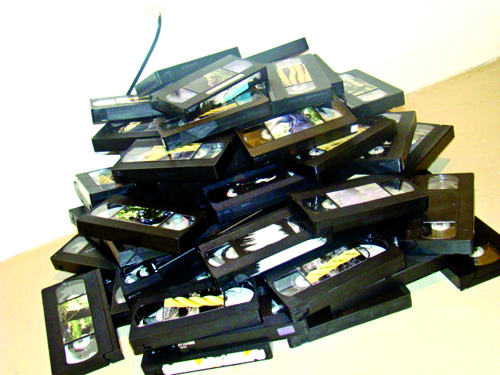Fourth-year visual arts student Lauren Orav presents a mixed media show, Tethers, about the complexties of relationships
Sarah Ciantar
Arts Editor

Lauren Orav, a fourth-year visual arts student, makes herself vulnerable with her exhibition Tethers located in the Gales Gallery until October 5.
Works in this mixed-media exhibition are united by a common theme of binding, and the use of tethers to address the intricacy of familial and romantic relationships.
“This show, in a way, is based around the title, because the form it is in now has changed from my original design of the show,” says Orav. “It was a matter of looking at the work I already had and seeing how tethers are a big part in all of them.”
Orav says the idea for this
show came when one of her classmates pointed out to her that her works involved a lot of tying and binding.
The recurring motif of binding is a way of exploring what holds things together in relationships, both familial and romantic. In the exhibition, these themes are embedded in Orav’s experiences with mental health and sexuality.
One of the first pieces you see when you enter the gallery, “3/4,” is a set of photos bound together in a book, and is one of the most important works for Orav.
The title itself references mental health and the coping strategy of counting the 3/4 musical time signature; a strategy which Orav herself uses.
An additional book work entitled “Maybe This is Something I Can’t Do” is another personal exploration that has similar themes to “3/4.”
“Both of them look at negotiation and mental health,” says Orav.
Placed on the right corner of the north wall, the work “Scraps” is composed of images of Orav’s naked torso printed on lined paper. The images are scattered: some are hung on the wall, and some are crumpled on the ground.
One of Orav’s personal favourites, “Scraps” shows fragmentation of self and body.
The use of inexpensive materials was a significant factor, explains Orav.
“I place value on things that might not have value traditionally placed on them,” she says. “With ‘Scraps,’ it’s lined paper that you would buy a pack of at the dollar store, and I just did it on my printer at home, taking that really expensive fine art aspect away from it—and it feels a bit more accessible to me in that way.”
“Please Rewind Tape” is another intriguing piece that holds a special significance for the artist. Orav says it’s based on a family memory, that she herself has no recollection of other than through the VHS on which it was captured.
Orav introduces the viewer to the experience with this piece, presenting and distorting the memory through playing the audio version of the video, and using film stills as labels for the VHS tapes that are a part of the work.
The show, as a whole, is composed of multi-media art, giving it a different feel than if it were solely photography. Orav is no stranger to interdisciplinary art.
“In a way, it just feels more natural for me as a person who is fairly interdisciplinary, in addition to having two majors,” says Orav. “I feel like crossing boundaries between things is fun and natural for the subject matter I’m often working with.”
Orav does this partially in hopes of opening up her artwork to people who don’t have a background in art.
By making herself vulnerable with the intimacy of the works, Orav is able to communicate to the viewer in a deeper way.


